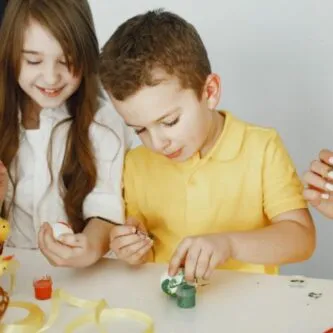
What activities help stimulate emotional development in children?
- Listening to Music
- Participating in Story Time
- Playing Listening Games
- Creating Emotional Regulation Strategies
Emotional development refers to one’s ability to identify, understand, and manage emotions properly. Developing emotional skills is crucial for children’s welfare as this helps in facing life’s toughest challenges. Given that emotional development begins at an early age and improves over time, parents have the responsibility of helping their children cope with emotional situations. The good news is that there are several activities that stimulate emotional development for children.
There are many emotions that are encountered starting from early childhood. Children may feel scared, surprised, happy, and excited all on the same day. As children become more aware of these emotions, parents must teach them how to express emotions and also how to manage them.
Continue reading on to learn how to stimulate emotional development for your children.
Listening to Music
Music is an important part of childhood. It can convey emotions. Common toddler songs like “If You’re Happy and You Know It”, which expresses happiness, and “Twinkle Twinkle Little Star”, which expresses curiosity, are some of the ways music helps children to recognize their emotions.
Participating in Story Time
Just like songs, story time and books are a vital part of childhood. These stories offer a chance for parents to stimulate emotions while reading to children. It helps children slowly recognize their own emotions too.
For example, when a child sees a storybook character with tears while mom reads the line sadly, he or she will learn more about sadness.
That’s why every child should have a good selection of storybooks and dedicated time for storytelling sessions.
Find books that explore emotions to help your children express and understand their own emotions. Many books explore plots about losing their toys, going on a trip, and even experiencing a big adventure. This helps children understand what they’re supposed to feel in similar situations in their own life.
On top of that, storybooks also encourage them to explore role pay. Emotional development can be stimulated once children personally mimic what happens in their storybooks.
Playing Listening Games
Aside from knowing what emotions are, emotional development also encompasses recognizing how to respond to these emotions. This helps children learn how to establish important boundaries.
This can start by playing simple listening games at home. The game “Simon Says” can be your best friend in helping improve children’s emotional skills.
Once they’ve gotten the hang of simple games, you can level these up by introducing puzzles and simple board games. This teaches them the feelings associated with winning or losing a game. It’s also an opportunity for parents to teach them the proper behavior when they start to feel frustrated or sad.
Creating Emotional Regulation Strategies
It is best to teach children how to cope with their emotions at a young age. Pre-school-aged children can already learn about many breathing exercises that help them get through feelings they may not understand.
This can begin by providing your children with a mood board to help them identify their emotions. Here, you can cut out facial expressions that show certain emotions and let your children point to what they’re feeling.
When they experience tantrums or high levels of frustration, you can also teach them various breathing exercises to help them release tension. This can be as simple as taking five deep breaths. By teaching these and referring to them often, kids will learn the right time to use them even when you’re not around.
Key Takeaway
Many activities stimulate emotional development in children, and these can all begin at home. From a young age, parents should teach their children to understand and manage their feelings. They’ll take these skills with them as they grow and start school.
Reedley International School in Manila is one of the top international schools in Metro Manila. Our kindergarten school follows a holistic-disciplinary approach that allows children to explore their emotions in a safe and caring environment. If you’re interested in enrolling your child with us, contact us here today.






-logo.png)



